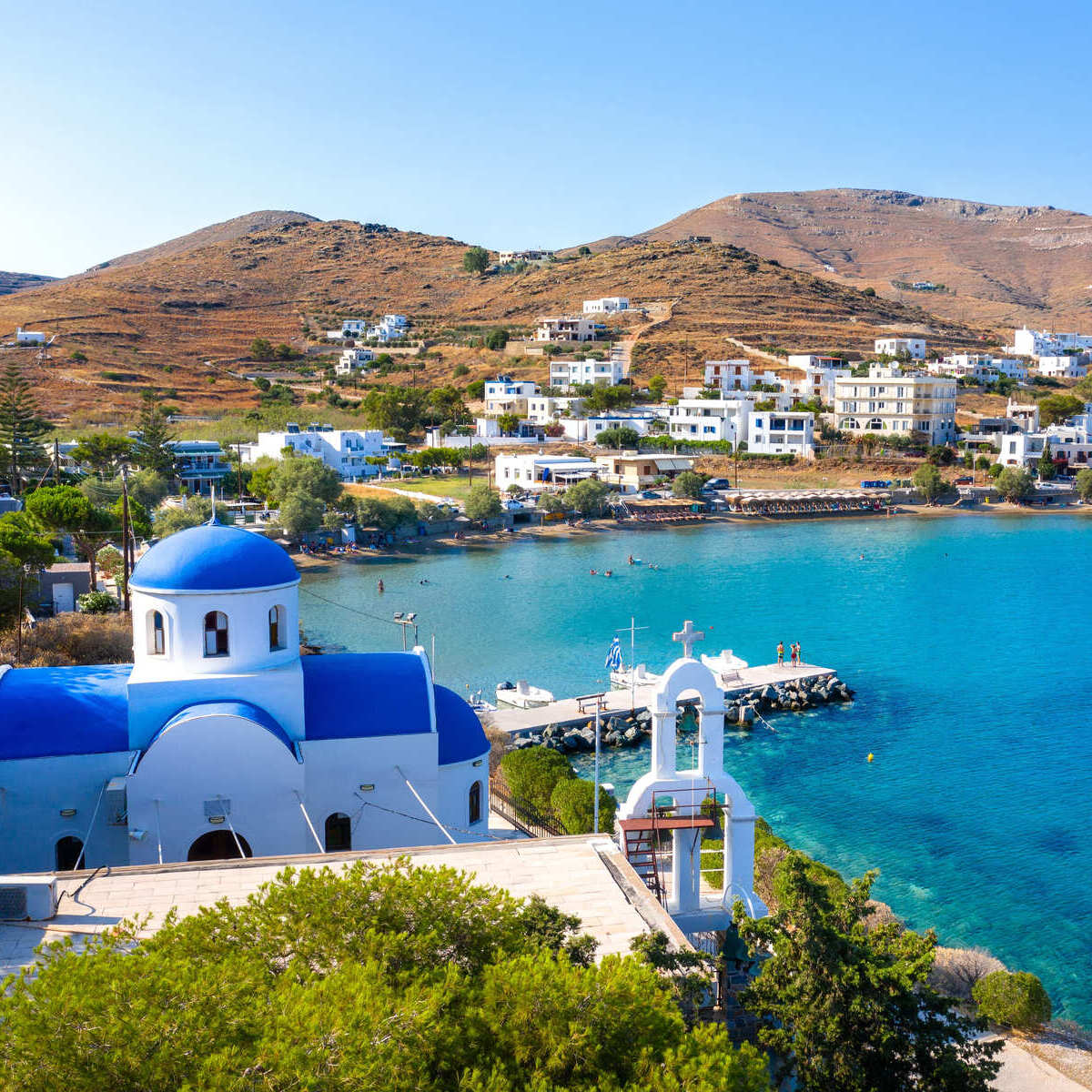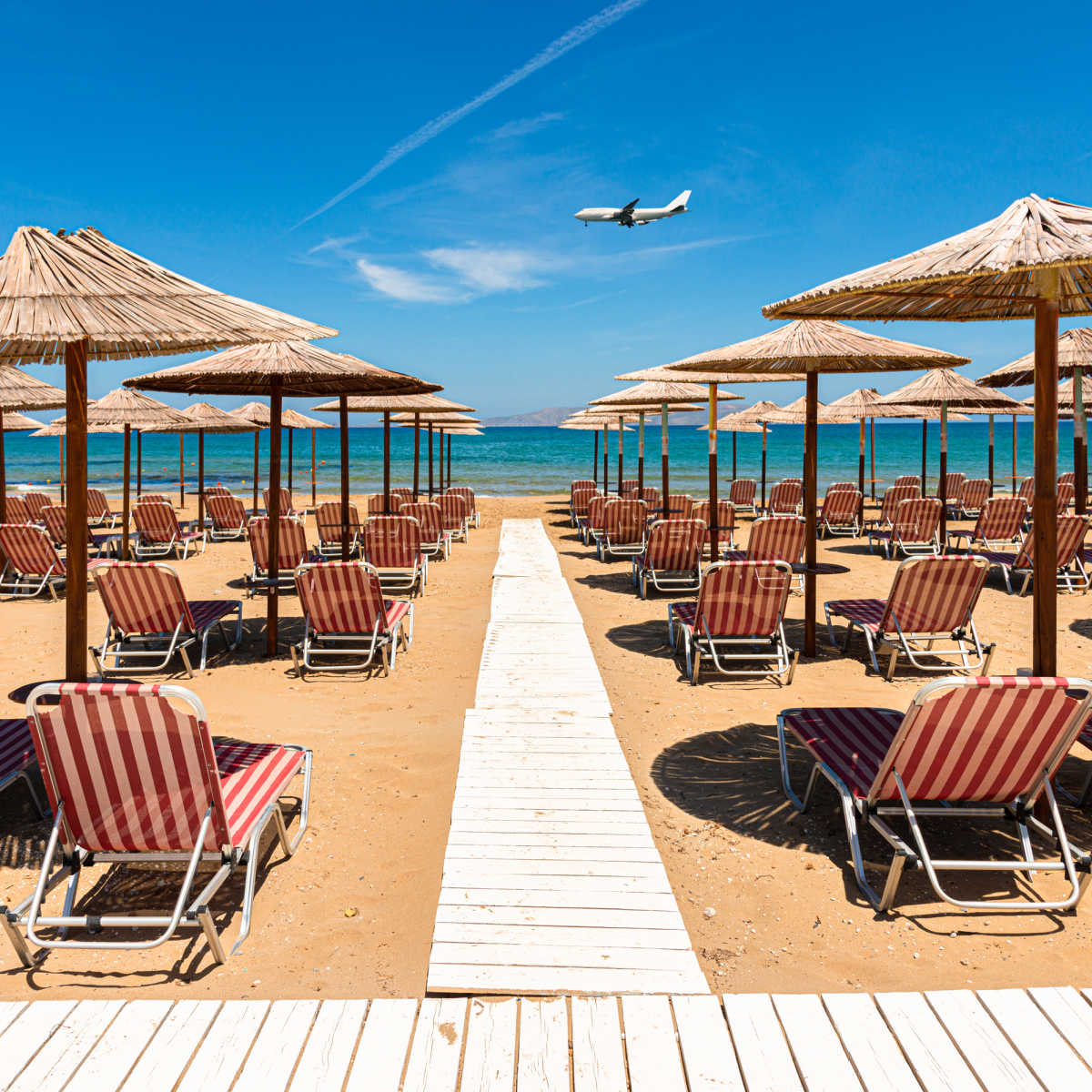As one of a handful of European destinations that will continue enjoying warmer temps and constant sunshine this fall, Greece is bracing for an influx of travelers in the coming two months.
With over 220 islands to its name, it has no shortage of sun-drenched spots, from the caldera views and blue domes Santorini is known for, to Mykonos’ lively party scene, to Paros’ quaint fishing villages and scenic beaches.
However, if you’re island-hopping around the Hellenic heartland this season, there are 5 important things you should keep in mind if you want to minimize costs, experience Greece in a meaningful manner, and most importantly, ensure smooth sailings:
Mix And Match Islands
For Cheaper Prices
There’s this common misconception among travelers that Greek islands are inherently expensive, but only a few—we’re thinking Mykonos, Santorini, Paros and Los—have sky-high rates.
These islands have become playgrounds for the wealthy, offering the kind of ‘barefoot luxury’ experience that seems far-removed from the largely rural, pastoral way of life of local communities, particularly in the Cyclades, where the famous whitewashed towns and blue domes are.
Most first-time visitors to Greece will make the mistake of ticking off both Santorini and Mykonos in a single go and end up crying about their credit card bill later. Instead of visiting only overpriced, touristy islands, why not mix and match and pick a lesser-known gem nearby to offset costs?
If you’re in the Santorini area, options include the up-and-coming Folegandros, where the average hotel rate stands at $75 per adult in the off-season, Amorgos, home to a landmark chalk-white cliffside monastery ($54-a-night), or the beautiful Astypaleia, Greece’s butterfly-shaped island ($80-a-night).
Not All Islands Are Beach Destinations
And Certainly Not Santorini
Here’s the deal if you’re hoping for a late-season beach getaway in a Greek island in October. The seas may be turquoise-blue, the weather may be nice and warm, and the views could be unparalleled, but not all islands are ideal for swimming.
Take Chios, for instance: increasingly popular for its off-path appeal, plethora of medieval villages frozen in time, and traditional mastic-heavy cuisine, this North Aegean island is the ultimate Greek destination, except local beaches are too rough.
We’re talking hard, pointy shingle stones that will stop just short of stabbing your soles as you walk on them, unless you’re wearing appropriate slippers, and not a single grain of sand in sight.
In Santorini, beach accessibility is (somewhat) better, but unless you’re fine with pebbles mixed with dark, volcanic sand, and deep-blue seas, not the teal waters you saw in the pictures, you might want to give it a miss.
Now, if it’s white sands and a crystalline Aegean you’re after, you should try instead Crete (it’s the home of the pinkish-white sand Elafonissi Beach), Zakynthos (the ‘Shipwreck Beach’ is sandy and surrounded by cliffs), and Kefalonia (most beaches are either sandy or a mix of sand and small pebbles).
Beware Of Abusive Roaming Fees!
Some Greek Islands Are Dangerously Close To Turkey
There’s something very few tour operators or even travel influencers will prepare you for: you could be paying exorbitant Turkish roaming fees when visiting certain Greek islands.
In case you haven’t realized, some of them are a stone’s throw away from the Turkish Coast. We’re talking a mere 1.25 miles in Kastellorizo’s case, 4 miles for Kos, and 11 miles for Rhodes. Though it is rare, on occasion, your phone will pick up a Turkish signal.
If you’re using an EU-wide SIM, your mobile operator will inform you that you’ve hit your roaming cap abroad, even if you’re still in Greece, and well within the limits of usage. That’s when you know you’re connected to a Turkish antenna.
Should this happen, the last thing you want to do is agree to the operator’s offer to increase your roaming package. Again, although you’re still technically in Greece, to your mobile data provider, you’re in Turkey. The minute you send out that ‘yes’ text, that’s when the crazy fees roll in.
This happened to me personally in Chios, within only 4 miles of the neighboring country. I thought that, for whatever reason, I had indeed hit my cap, as I was given no indication that the SMS referred to international roaming outside of Greece.
The next thing I do is hit ‘yes’ to regain internet access as quickly as possible, believing I’d be charged somewhere between $30 and $40 for additional data in Greece.
Imagine my surprise when I get the bill and I’ve gotten set back an eye-watering $216 for roaming in Turkey outside of my EU data package. Yeah, ouch.
Everything Shuts Down In The Low Season
Visit Before November
Given how crowded some of the islands can get, especially in the Cyclades, where Santorini, Mykonos, Naxos, and all of the most famous tourist spots are located, you might feel tempted to ‘wait it out’ until the season is over—or even the off-season.
After all, it’s not like the cruise crowds are dwindling in Santorini in September, anyway.
The only problem with visiting the islands later in the fall, or even at the start of winter, is that most service and accommodation providers shut down. To put it simply, those beautiful, lively whitewashed choras turn into ghost towns from November through March.
‘Oh, that’s great, I’ll have them all to myself then!’
That may be true… but we hope you enjoy cooking, and longer drives to the nearest available restaurant (likely to only open on the weekend, anyway). You may also find a hard time finding tour operators, transfers, and even car rentals, which could be a tricky business.
The best period to island-hop is right now, between September and mid-October: it’s not scorching-hot, rather pleasantly-warm, there are plenty of tourists around, yet far fewer than the July–August crowds, and the islands are still two months away from hibernating.
…Then There’s The Mandatory Fingerprinting
(But Don’t Blame It On Greece!)
Last but not least, we have bad news to give you. Well, if you’re not exactly enthusiastic about growing travel-related bureaucracy, that is.
From October 12, Americans will have to give their fingerprints when traveling to the European Union, and this includes Greece and its many islands. This is part of an EU-wide directive that seeks to tighten border controls and make it easier to catch criminals and overstayers.
You can’t fly to the Greek islands directly from the United States, so you will be stopping in Athens first. Once in Athens, you will be guided to a biometric registration machine, similar to a check-in kiosk, where you will be instructed on how to give your fingerprints and have your picture taken.
The new requirement, dubbed EES (Entry-Exit System) applies to all non-European travelers, so if you’re traveling with an EU passport (even as a dual citizen), you’re exempt from registering, so long as you present as a European citizen.
The EES is one of a number of revamped travel rules set to affect Europe-bound travelers in the coming year, and if you don’t want to miss any important updates, we’d advise you to keep an eye on our TOP Entry Requirement Checker.
Whatever changes may be effected, it will be shown on there first.
The Travel Off Path Advantage: Your Travel Toolkit
Subscribe To Our Latest Posts
Enter your email address to subscribe to Travel Off Path’s latest breaking travel news, straight to your inbox.









